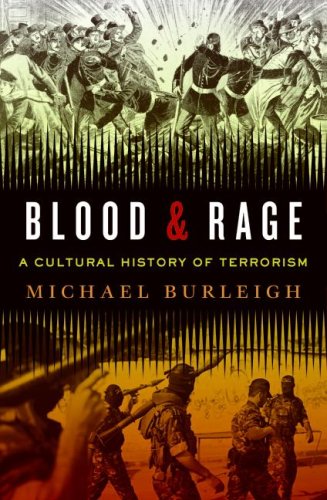
Blood and Rage
A Cultural History of Terrorism
کتاب های مرتبط
- اطلاعات
- نقد و بررسی
- دیدگاه کاربران
نقد و بررسی

January 5, 2009
Burleigh (Earthly Powers
), one of the leading English-language scholars of the role of ideas in the modern world, makes another major contribution in this pull-no-punches cultural study of terrorism as it has been lived and practiced for a century and a half. Burleigh sees modern terrorism’s roots in the mid–19th century, with the emergence of the Irish Fenians, the Russian nihilists, the Western anarchists who used fear induced by violence to compensate for their lack of political power. Their tactics were adopted in the mid–20th century by movements seeking decolonization, like the Palestinian Black September, Italy’s Red Brigades and Germany’s Red Army Faction. By century’s end, terrorism further mutated into a tool for marginalized “local nations” like the Basques. Most recently, terrorism has become identified with what Burleigh calls the “world rage of Islamism.” Burleigh’s case studies demonstrate mercilessly that terrorism is “a career, a culture, and a way of life” attractive for its own sake as well as its ostensible objectives. The terrorist milieu, the author demonstrates convincingly, is “morally squalid,” intellectually bankrupt and politically barren. Burleigh considers the lessons history has to teach us, though he eschews policy recommendations.

February 15, 2009
British historian Burleigh ("Sacred Causes: The Clash of Religion and Politics, from the Great War to the War on Terror"), who defines himself here as a conservative realist, examines the cultural history of terrorism from the Irish Fenians in the mid-19th century through our times. Groups covered include Russian nihilists, American and European anarchists, Palestinian Black September, Italian Red Brigades, and al-Qaeda. Instead of studying the ideology that compels people to adopt violence as a means of social and political change, Burleigh focuses on the life histories and actions of the participants (e.g., how and from whom they obtain funds and weapons; how they plan and execute attacks on people and institutions). From this perspective, people who become terrorists are not always freedom fighters but individuals who occupy a world that is "morally squalid when it is not merely criminal," as Burleigh writes. He discusses the responses of governments to these threats, using research from periodical articles and secondary sources. The central value of this work lies in the examination of the inner workings of terrorist organizations. Some readers will take issue with the author's political bent and his apparent hostility to concepts of social change. Recommended for all public and academic libraries.Stephen L. Hupp, West Virginia Univ. Lib., Parkersburg
Copyright 2009 Library Journal, LLC Used with permission.

























دیدگاه کاربران